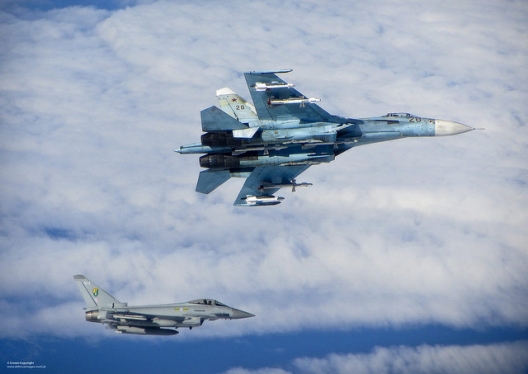 The Baltic countries are registering a dramatic increase in Russian military provocations, rattling nerves in a region which fears it could be the next frontier after Ukraine in Moscow’s quest at asserting its regional power.
The Baltic countries are registering a dramatic increase in Russian military provocations, rattling nerves in a region which fears it could be the next frontier after Ukraine in Moscow’s quest at asserting its regional power.
Nato fighters policing Baltic airspace were scrambled 68 times along Lithuania’s borders this year, by far the highest count in more than 10 years. Latvia registered 150 “close incidents”, cases where Russian aircraft were found approaching and observed for risky behaviour. Estonia said its sovereign airspace had been violated by Russian aircraft five times this year, nearing the total count of seven over the previous eight years.
Finland has had five violations of its airspace this year against an annual average of one to two in the previous decade, while Sweden last week suffered what Carl Bildt called the “most serious airspace incursion” in his eight years as foreign minister. . . .
Although the Baltic states have borne the brunt of Russian adventurism in the skies, there has been a much broader surge in incidents, and other Nato members including Canada, the US, the Netherlands, Romania and the UK have experienced airspace infringements as well.
According to one western official, so far this year there have been well over a hundred quick reaction alerts – the scrambling of fighter jets – because of Russian activity in the vicinity of alliance airspace, a threefold increase over the number for the whole of 2013.
“[We] can attribute some of these flights to an increase in Russian military exercises and activity along Nato’s eastern borders but in many cases the Russian military is being provocative by probing airspace they are not authorised to enter,” said one senior Nato military officer, who confirmed there was significant concern over the increased number of incidents. “As in Ukraine, Russian aggressiveness in the air adds to the tension between the international community and the Kremlin. . . .”
Russia’s sorties involve a range of aircraft, from smaller Sukhoi Su-27 Flanker fighters and surveillance planes to Tupolev Tu-22 supersonic bombers and even giant Tupolev Tu-95 long-range nuclear bombers.
According to the Pentagon, in the past two months alone Russian nuclear bombers have made at least 16 incursions into US and Canadian air defence identification zones. The most recent incursions – last Wednesday and Thursday – coincided with a visit of Ukrainian president Petro Poroshenko to Ottawa and Washington.
Image: A Sukhoi Su-27 Flanker and an RAF Typhoon fighter jet, June 17, 2014 (photo: UK Ministry of Defense)
